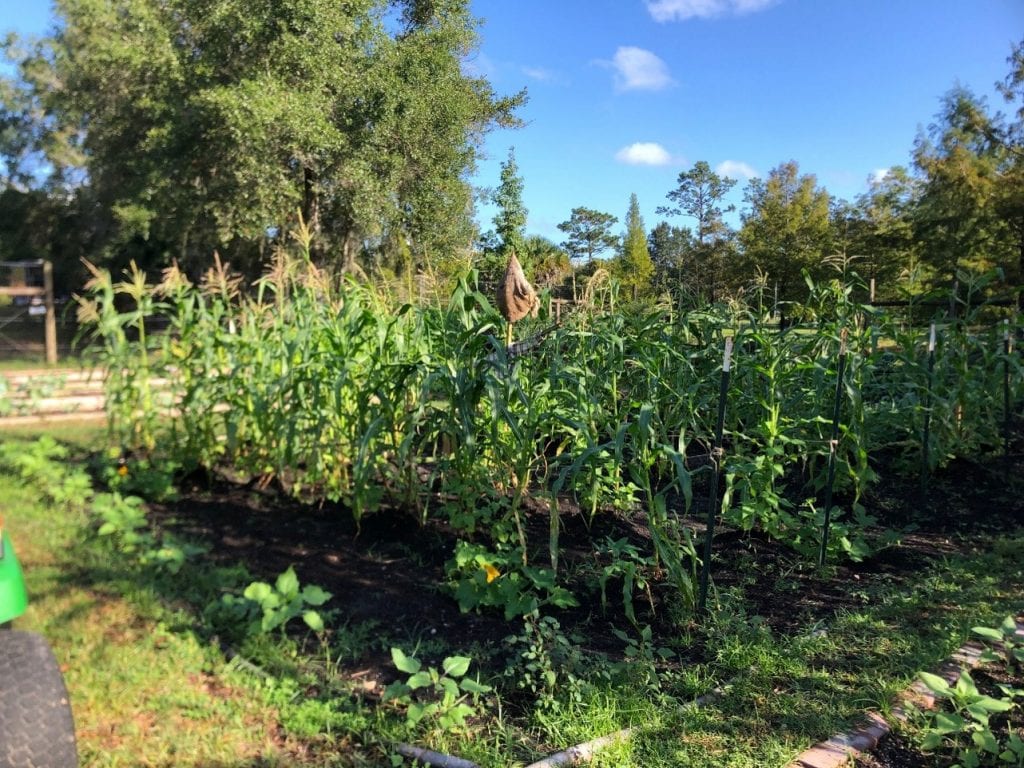Farming with Traditional Companion Planting

Corn, beans, and squash—oh my! Our students grew these three staple native American crops, known as the Three Sisters in the Community Farm and Garden this fall using a traditional companion planting method. The Three Sisters Method is one of the oldest natural growing techniques developed by Native Americans. What makes the Three Sisters planting method so successful is that each crop is directly benefiting from the others growing with it, both structurally and through nutrient absorption and exchange.
In the Three Sisters method, crops are planted in mounds approximately one foot high and one foot across to space them properly. Once the mounds are made, the corn is the first to be planted. The size of the mounds we created were large enough to fit four corn plants in a square. Once the corn plants reach 4-6 inches tall, bean seeds are planted between the corn. It is important to use a vining variety of beans, as the beans will begin to grow up the corn and use them as a natural trellis. After the beans have sprouted, the final step is to plant the squash variety. Squash seeds can be planted in the sides of the mound, beneath the beans and corn.
Once all the crops are in the ground growing together, it is easy to see how and why this method works. While the corn grows relatively quickly, it provides a sturdy trellis for the young vining beans. Similarly, the vines from the beans provide a sturdier base for the corn once it begins to develop the heavy cobs. As with all legumes, the beans fix nitrogen from the air into the soil, so the corn and squash are naturally fertilized from the beans. The squash spreads out across the ground suppressing weed growth and taking advantage of the growing space between the mounds. Even though we tried this planting method slightly out of season this fall, it was wildly successful and it provided a complex an interesting companion planting to educate our students and visitors about this traditional method of farming. We look forward to trying more natural growing techniques in our farm in the future!
